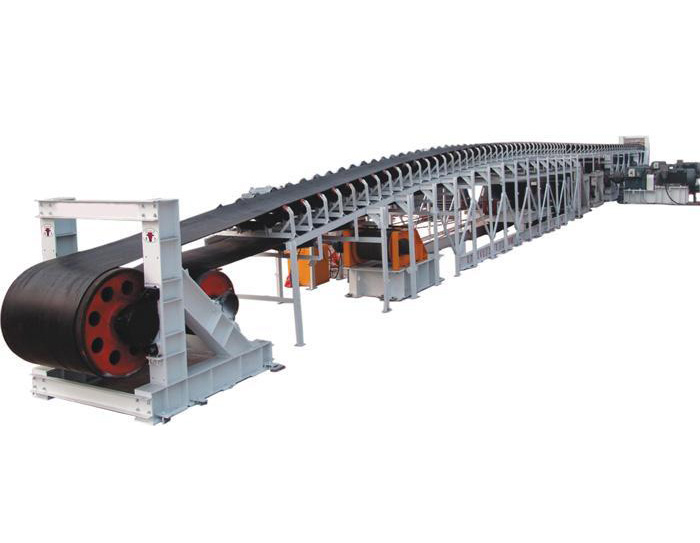
The belt conveyor, also known as the belt conveyor, is the main component of the conveyor belt, also known as the belt, and the conveyor belt doubles as a traction mechanism and a bearing mechanism. The composition and working principle of the belt conveyor are as follows, which mainly include the following parts: conveyor belt (commonly known as belt), idler and intermediate frame, roller tensioning device, braking device, cleaning device and unloading device.

The upper belt of the fuselage of the ordinary belt conveyor is supported by trough-shaped idlers to increase the cross-sectional area of the flow, and the lower belt is the return section (the empty belt that is not loaded), and the lower idler is generally a flat idler. Belt conveyors can be used for horizontal, inclined and vertical transportation. For ordinary belt conveyor inclined upward transportation, its inclination angle does not exceed 18°, and downward transportation is not
More than 15°. The conveyor belt is wound through the transmission pulley and the tail reversing roller to form an infinite annular belt. The upper and lower parts of the conveyor belt are supported on the rollers. The tensioning device gives the conveyor belt the tensioning force needed for proper functioning. When working, the transmission roller drives the conveyor belt to run through the friction between it and the conveyor belt. The material is loaded onto the conveyor belt from the loading point to form a continuous movement of the flow, which is unloaded at the unloading point. Generally, the material is loaded onto the upper belt (bearing section) and unloaded on the head drum (here, that is, the transmission drum), and can also be unloaded in the middle by using a special unloading device. Conveyor belts are the most expensive and wear-prone of belt conveyor components. When conveying abrasive materials such as iron ore, the durability of the conveyor belt should be significantly reduced. time
Improving the traction of the transmission can be considered from the following three aspects:
(1) Increase the envelope angle % For occasions that require greater traction, double rolling simple transmission can be used to increase the circumference
Wrap corners.
(2) Increase the coefficient of friction "The specific measures can cover the liner with a large coefficient of friction on the transmission drum to increase the coefficient of friction.
Through the elaboration of the above transmission principle, it can be seen that increasing the envelope angle is an effective way to increase traction.
Therefore, this method is intended to be used in transmission.
(3) Increase the tension force. Increasing the initial tension can increase the tension of the conveyor belt at the point of separation of the transmission rolling, although it is feasible to improve the traction force. However, due to the increase "the conveyor belt section must be increased accordingly, so that the structural size of the transmission device is increased, which is uneconomical. Therefore, it should not be used in the design. But in operation, due to the elongation of the conveyor belt, the tension decreases, resulting in a decrease in traction, and the tension can be appropriately increased by using a tensioning device, thereby increasing ~, so as to improve the traction.